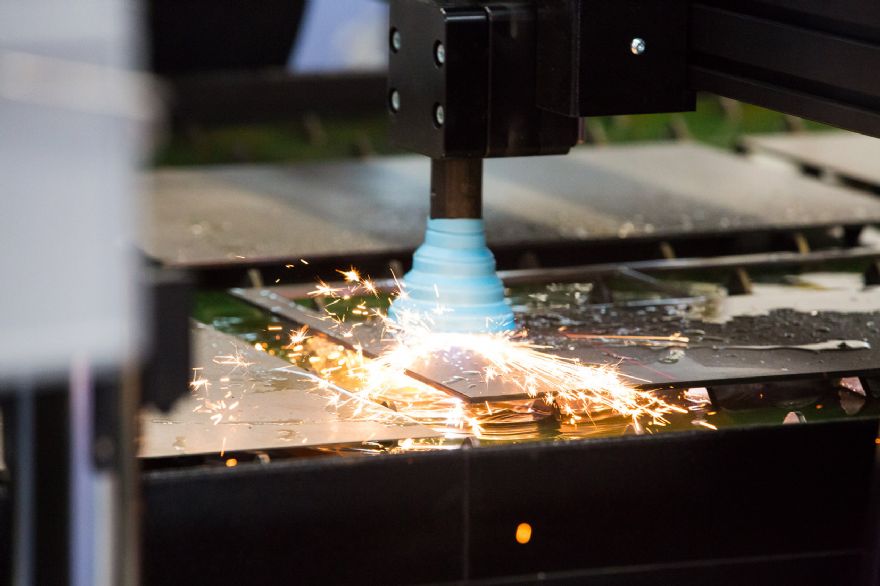
The UK manufacturing sector continued to face tough operating conditions in May. A combination of weak global demand, turbulent trading conditions and rising cost burdens led to reduced levels of output, new orders, new export business and employment.
The seasonally adjusted S&P Global UK Manufacturing Purchasing Managers’ Index (PMI) rose to a three-month high of 46.4 in May, up from 45.4 in April and above the earlier flash estimate of 45.1. The PMI has nonetheless signalled a deterioration in operating performance in each of the past eight months. Four out of the five PMI components (output, new orders, employment and stocks of purchases) were consistent with contraction.
However, there were some tentative signs that the sector may have turned a corner. Survey indices monitoring trends in output and new business rose for the second month in a row, signalling an easing in their respective downturns, and posted above the earlier flash estimates (which were calculated on 20 May compared to 27 May for final readings).
Manufacturing production contracted for the seventh consecutive month in May, as companies scaled back production in response to reduced intakes of new work from both domestic and overseas customers. Total new business volumes decreased for the eighth month running, amid reports of a general reluctance among clients to commit to new contracts. Weak global market conditions, trade uncertainty, low customer confidence and cost pressures resulting from recent increases to UK employer NICs and minimum wages also contributed to clients' reluctance to spend. That said, a recent bout of good weather did boost sales at some manufacturers.
The downturns in output and new orders remained widespread by both sub-sector and company size definitions in May. All three product categories monitored by the survey (consumer, intermediate and investment goods) and company size categories (small, medium and large) saw output and new orders contract. There were signs that small-scale producers were being hit especially hard by the downturn, seeing the steepest drops in both production and new business.
Tariff uncertainty, Government policy and global market turbulence were all mentioned by panellists as factors underlying a further decrease in new export orders during May. Foreign demand fell for the 40th successive month, although the rate of contraction eased noticeably compared to the prior survey month. Weaker inflows of new work were reported from the European Union (EU) and US markets.
May saw business confidence remain subdued by the historical standards of the survey, despite recovering to a three-month high. Manufacturers continued to raise concerns that turbulent trade conditions, the weak economic outlook and rising cost burdens will make market conditions tough during the year ahead.
Less than half of the survey panel (49%) forecast growth of production volumes over the next 12 months, compared to 13% expecting a contraction. Confidence levels were lowest at small-scale producers (dipping to a near record low), while optimism rose at both medium and large-size firms.
Lacklustre conditions at present combined with an increasingly uncertain outlook fixed manufacturers on a cost-conscious course during May. Employment, purchasing activity, input stocks and finished goods inventories were all lowered, as companies acted to protect margins and offset the impact of rising cost burdens from employer NICs, minimum wages and increased raw material costs. Supply
chains remained under stress, with average vendor lead times lengthening to the greatest extent during the year so far. This was linked to port disruption, tariff uncertainty and material
shortages.
Input price inflation eased to a five-month low in May. Manufacturers seeing costs increase blamed higher energy costs, tariffs, freight prices and the pass-through of greater cost burdens by suppliers. Part of the rise in costs was offset through higher selling prices.
Rob Dobson, director at S&P Global Market Intelligence, said: “May PMI data indicate that UK manufacturing faces major challenges, including turbulent market conditions, trade uncertainties, low client confidence and rising tax-related wage costs. Downturns in output, new orders
and new export business have continued, and business optimism has stayed subdued by the historical standards of the survey.
“Smaller manufacturers are experiencing the sharpest pinch, registering the steepest retrenchments in output and demand and seeing their confidence slump to a near record low. Job losses are also rising across manufacturing, with the rate of decline in employment gathering pace.”
He concluded: “There are some signs of manufacturing turning a corner though. PMI indices tracking output and new orders have moved higher in each of the past two months, suggesting the downturn is easing, and came in better than the earlier flash estimates for May. That said, trading conditions remain turbulent both at home and abroad, making either a return to stabilisation or a sink back into deeper contraction likely during the coming months.”
Ginni Cooper, Manufacturing partner at MHA, commented: “The rather modest increase in PMI today is another signal of how tough the last six months have been for the sector. Since the PMI dipped below 50 in November last year companies have been focused on survival mode and the appetite and willingness of corporate boards and business owners to invest has been limited.
The recent announcements on trade deals with India, the US and the EU have been broadly welcomed by our clients and the news last week of a new programme of foundation-level apprenticeships sounds promising but the sector is still crying out for stability and the chance to do some long-term planning. With the confidence their world is not going to be turned upside down by dramatic noises off from London or Washington.
While manufacturers and their owners are by nature resilient and thankfully there has been little sign of companies going to the wall, the sector is very much still bumping along the bottom. The painful increases in employment costs are now baked into cashflow forecasts so some certainty (albeit negative) has now returned to manufacturing and if you are glass half full optimist, you could say it won’t get any worse, but it remains rather a depressing outlook overall.”